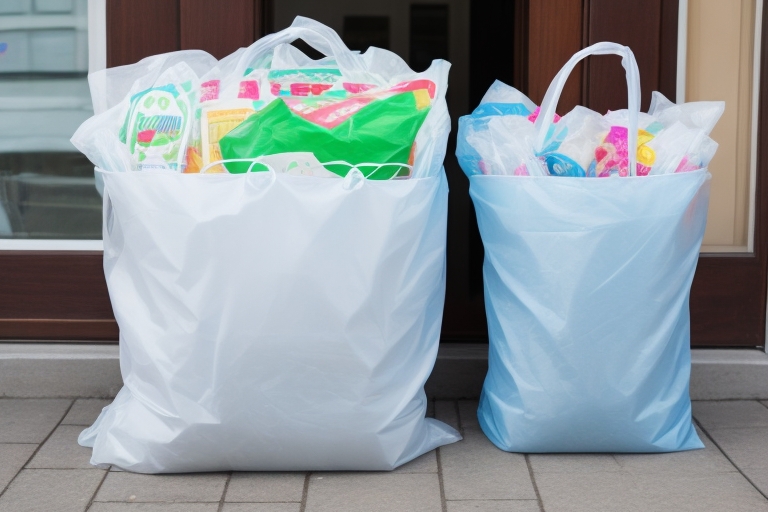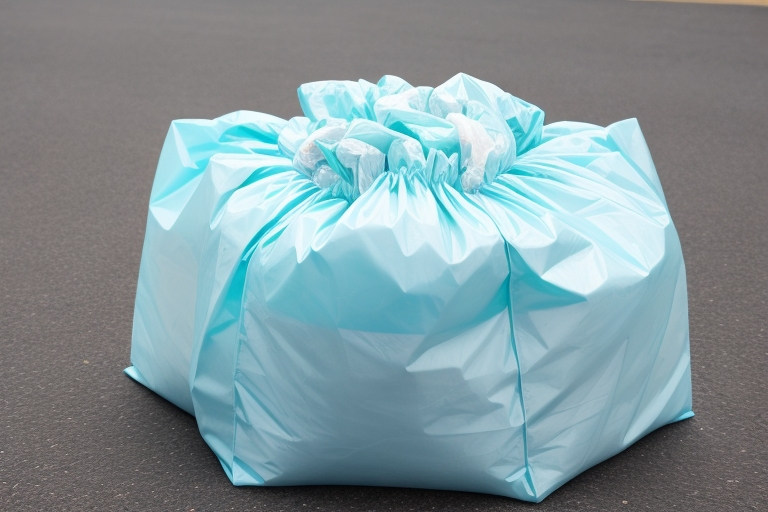
Plastic bags have become an integral part of our daily lives, offering convenience in carrying groceries, clothing, and various other items. However, their widespread use has raised concerns about their environmental impact. The longevity of plastic bags in the environment and their potential to harm ecosystems have prompted a closer look at their biodegradability.
The Importance of Understanding Biodegradability: One crucial aspect of assessing the environmental impact of plastic bags lies in understanding whether they are biodegradable. Biodegradability refers to the ability of a material to break down naturally into harmless substances through the action of microorganisms. This characteristic plays a significant role in determining the environmental footprint of plastic bags.
Purpose of the Blog Post: The purpose of this blog post is to provide clarity on the often misunderstood concept of plastic bag biodegradability. There are common misconceptions surrounding whether plastic bags break down naturally or persist indefinitely in the environment. By presenting accurate information and dispelling myths, this post aims to empower readers to make informed choices about their use of plastic bags.
Stay tuned as we delve into the science behind plastic bag decomposition, explore the different types of plastic bags available in the market, and debunk prevalent misconceptions. Let’s unravel the mystery of plastic bags to foster a greater understanding of their impact on the environment and make conscious decisions for a sustainable future.
What Is Biodegradability?
Biodegradability is the process by which a material breaks down and decomposes into simpler substances, returning to the environment. It’s an important factor when it comes to sustainability and environmental protection.
Plastic bags are not biodegradable, meaning they don’t break down naturally over time. They’re made from petroleum-based polymers that can take hundreds of years to decompose — if at all. In other words, plastic bags are non-biodegradable. This means that once discarded, these materials linger, cluttering landfills and polluting marine environments for decades, even centuries.
The impact of non-biodegradable plastic bags can be seen everywhere – from public parks to rural landscapes – where they pose a risk to wildlife through entanglement or ingestion. They also make up a significant portion of the waste stream in poor countries where communities lack access to proper waste management systems.
There are alternatives to plastic bags that are biodegradable or compostable such as paper, cotton or jute bags which decompose quickly in soil and water. These materials can be recycled more easily and often carry higher reuse value than single-use plastic bags. Additionally, reusable shopping bags made out of fabric or other sustainable materials provide an even better option as they can be reused multiple times before needing replacement.
Reducing our reliance on single-use plastics is essential in curbing pollution and protecting our environment. To do so we must adopt best practices when it comes to sustainable consumption patterns such as using reusable shopping bags instead of plastic ones and bringing our own containers for takeaway foods whenever possible.
What are plastic bags?
Plastic bags are lightweight, flexible containers made of polyethylene, a type of synthetic polymer derived from petrochemicals. These bags have become ubiquitous in our daily lives due to their convenience and versatility. They are commonly used for carrying groceries, packaging goods, and transporting a variety of items.
Common Uses: Plastic bags serve a multitude of purposes, making them an integral part of modern living. They are widely employed in supermarkets and retail stores for packaging and transporting purchased items. Their lightweight nature makes them convenient for consumers to carry, and their durability ensures that they can hold a variety of goods without tearing.
Types of Plastic Bags:
- Single-use Bags: These are the thin, disposable bags typically provided at checkout counters. While they are convenient for short-term use, their single-use nature raises concerns about their environmental impact.
- Reusable Bags: In response to environmental concerns, reusable bags have gained popularity. These are often made from sturdier materials and are designed for multiple uses, aiming to reduce the need for single-use plastic bags.
Widespread Use and Environmental Concerns: The widespread use of plastic bags has contributed to environmental challenges. Due to their lightweight nature, plastic bags can easily be carried by the wind, leading to litter in urban and natural environments. Improper disposal and inadequate recycling exacerbate the problem, as plastic bags can take hundreds of years to decompose.
The environmental concerns associated with plastic bags include pollution of waterways, harm to wildlife through ingestion or entanglement, and the overall contribution to the global issue of plastic pollution. As we continue to explore the impact of plastic bags on the environment, it becomes crucial to consider sustainable alternatives and adopt responsible consumption practices.
Biodegradability of plastic bags

Biodegradability and Its Significance: Biodegradability refers to the ability of a material to break down into simpler, natural substances through the action of microorganisms over time. In the context of plastic bags, understanding biodegradability is crucial for assessing their environmental impact. Ideally, biodegradable materials minimize their presence in the environment by returning to natural elements, reducing long-term ecological harm.
Challenges in Plastic Bag Biodegradation: Plastic bags pose challenges to biodegradation due to their composition and manufacturing process. Most conventional plastic bags are made from polyethylene, a polymer with a structure that microorganisms struggle to break down. The manufacturing process involves creating long chains of polymers that resist degradation, contributing to the persistence of plastic bags in the environment. Additionally, exposure to sunlight and oxygen can lead to fragmentation rather than complete breakdown, creating microplastics that can further harm ecosystems.
Scientific Research and Studies: Numerous scientific studies have explored the biodegradability of plastic bags, shedding light on the complexities of their decomposition. Research has shown that certain additives and treatments can enhance the biodegradation of plastic bags, but complete breakdown remains a challenge. Biodegradable plastic alternatives, such as those derived from plant-based materials, have been developed to address environmental concerns. However, even these alternatives may require specific conditions to break down efficiently.
Understanding the nuances of plastic bag biodegradation involves considering factors like microbial activity, environmental conditions, and the specific composition of the plastic material. As we navigate the scientific landscape, it becomes evident that a comprehensive approach, including responsible disposal practices and the promotion of sustainable alternatives, is essential for mitigating the environmental impact of plastic bags.
Environmental impact of plastic bags
Negative Consequences of Plastic Bags on the Environment: The environmental impact of plastic bags is profound and multifaceted, with repercussions that extend across ecosystems. Understanding these consequences is crucial for advocating sustainable practices and policies.
Long Lifespan and Persistence: Plastic bags are notorious for their extended lifespan. In landfills, the lack of exposure to sunlight and oxygen slows down their degradation process. The persistence of plastic bags in landfills exacerbates the space constraints and contributes to environmental degradation.
In aquatic environments, plastic bags pose a significant threat. When they enter oceans and water bodies, their buoyancy allows them to travel vast distances. This not only results in unsightly pollution along coastlines but also contributes to the formation of massive oceanic garbage patches.
Harmful Effects on Wildlife and Marine Life: One of the most alarming consequences of plastic bag pollution is its impact on wildlife. Marine animals often mistake plastic bags for food, leading to ingestion. This ingestion can cause blockages in their digestive systems, malnutrition, and even death. Additionally, the entanglement of animals in plastic bags can lead to injuries, hindering their ability to move, hunt, or escape predators.
Human Health Concerns: The environmental impact of plastic bags also extends to human health. As plastic bags break down into smaller particles, they can release harmful chemicals. These microplastics can contaminate water sources and enter the food chain, potentially posing health risks to humans through the consumption of contaminated seafood or water.
The long lifespan and persistence of plastic bags in landfills and oceans, coupled with their detrimental effects on wildlife and potential risks to human health, underscore the urgent need for responsible plastic use and waste management practices. Advocating for the reduction of single-use plastic bags and promoting eco-friendly alternatives are essential steps towards mitigating these environmental challenges.
Alternatives and solutions
Eco-Friendly Alternatives:
- Reusable Cloth Bags: Switching to reusable cloth bags is a simple and effective alternative to plastic. These bags are durable, washable, and can be used for an extended period, significantly reducing the need for single-use plastic bags.
- Biodegradable Bags: Explore biodegradable alternatives made from materials like cornstarch or other plant-based sources. These bags break down more easily than traditional plastic, minimizing environmental impact.
- Mesh Produce Bags: When it comes to grocery shopping, opt for mesh produce bags for fruits and vegetables. They are lightweight, washable, and eliminate the need for plastic produce bags.
Reducing Plastic Bag Usage and Promoting Recycling:
- BYOB (Bring Your Own Bag): Make it a habit to bring your own reusable bags when shopping. Keep them in your car, backpack, or purse so they’re always on hand.
- Say No to Single-Use Bags: Politely refuse single-use plastic bags when unnecessary. Carry items by hand or use a backpack if you have only a few items.
- Recycle Responsibly: If you must use plastic bags, ensure they are recycled properly. Many grocery stores have designated bins for plastic bag recycling.
Practical Tips for Sustainable Living:
- Educate and Advocate: Spread awareness about the environmental impact of plastic bags and encourage others to adopt sustainable practices.
- Support Eco-Friendly Businesses: Choose to support businesses that prioritize sustainable packaging and practices.
- DIY Reusable Bags: Get creative and make your own reusable bags using old fabric or clothing. This not only reduces waste but also adds a personal touch to your sustainable efforts.
- Minimize Plastic in Daily Life: Explore ways to reduce overall plastic usage. Choose products with minimal packaging, carry a reusable water bottle, and opt for products with eco-friendly packaging.
By embracing eco-friendly alternatives, actively reducing plastic bag usage, and advocating for sustainable practices, individuals can contribute to a healthier planet. Small actions collectively lead to significant positive impacts, creating a more sustainable and environmentally conscious future.
FAQs
- Are plastic bags biodegradable?
- No, most traditional plastic bags are not biodegradable. They are made from non-biodegradable materials that can persist in the environment for hundreds of years.
- What is the difference between biodegradable and non-biodegradable plastic bags?
- Biodegradable plastic bags are designed to break down into natural substances, like water and carbon dioxide, through the action of microorganisms. Non-biodegradable bags, on the other hand, do not easily decompose and can contribute to long-term environmental pollution.
- Do all biodegradable plastic bags break down in the same way?
- No, there are different types of biodegradable plastics with varying decomposition processes. Some may require specific conditions, such as industrial composting facilities, to break down efficiently, while others may break down more easily in natural environments.
- Are biodegradable plastic bags a sustainable alternative?
- While biodegradable bags have the potential to reduce environmental impact, their sustainability depends on various factors, including the type of biodegradable material used and proper disposal methods. Improper disposal can still contribute to pollution.
- Can I recycle biodegradable plastic bags?
- Recycling options for biodegradable bags may vary. Some can be recycled alongside traditional plastics, while others may require specialized recycling processes. It’s crucial to check with local recycling facilities for specific guidelines on disposal.
